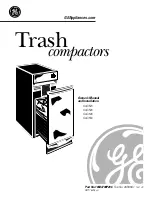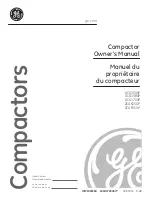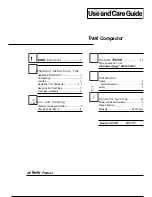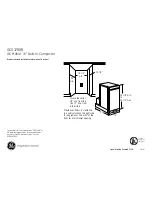
INTRODUCTION
Dusts
Powder, dusts or clouds may be irritant, harmful or toxic. Avoid breathing dusts from powdery chemical materials or
those arising from dry abrasion operations. Wear respiratory protection if ventilation is inadequate.
Electric shocks
Electric shocks can result from the use of the faulty electrical equipment or from the misuse of equipment even in
good condition.
Ensure that electrical equipment is maintained in good condition and frequently tested.
Ensure that flexes, cables, plugs and sockets are not frayed, kinked, cut, cracked or otherwise damaged.
Ensure that electric equipment is protected by the correct rated fuse.
Never misuse electrical equipment and never use equipment which is in anyway faulty. The results could be fatal.
Use reduced voltage equipment where possible in preference to electrical equipment.
In cases of electrocution:
• Switch off electricity before approaching victim.
• If this is not possible, push or drag victim from source of electricity using dry non-conductive material.
• Commence resuscitation if trained to do so.
• Summon medical assistance
Exhaust fumes
These contain asphyxiating, harmful and toxic chemicals and particles such as carbon oxides, nitrogen oxides, alde-
hydes, lead and aromatic hydrocarbons. Engines should only be run under conditions of adequate extraction or
general ventilator and not in confined spaces.
Gasoline (petrol) engine
There may not be adequate warning properties of odour or irritation before immediate and delayed toxic or harmful
effects arise.
Diesel engine
Soot, discomfort and irritation usually give adequate warning of hazardous fume concentrations.
Fiber insulation
See ducts.
Used in noise and sound insulation.
The fibrous nature of surfaces and cut edges can cause skin irritation. This is usually a physical and not a chemical
effect.
Precautions should be taken to avoid excessive skin contact through careful organization of work practices and the
use of gloves.
Fire
See welding, foams, legal aspects.
Many of the materials found on or associated with the repair of vehicles are highly inflammable. Some give off toxic
or harmful fumes if burnt.
47899733 23/06/2015
10
















































